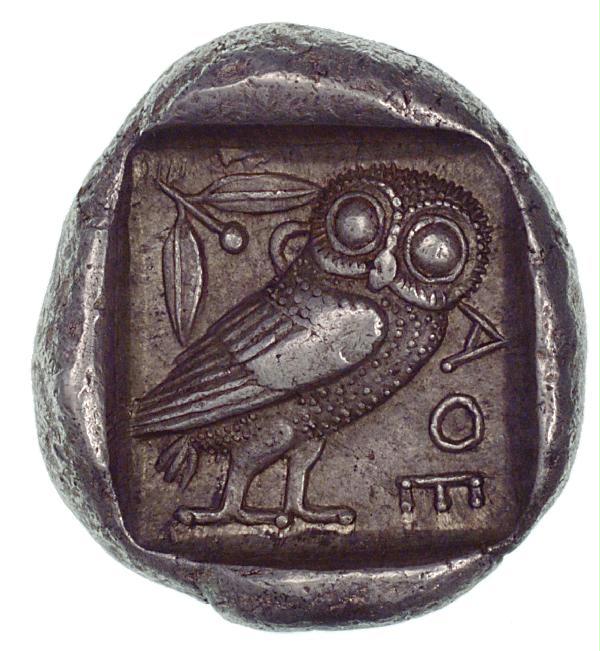Monday, July 31, 2017
Sunday, July 30, 2017
Peter Dizozza Live at the Sidewalk Cafe
In anticipation of the publication of Terrance Lindall's Milton in Outer Space, Peter Dizozza and Terrance Lindall have composed a musical number. Please click HERE for a sample of Mr. Dizzoza premiering the piece on July 26 at the Sidewalk Cafe in New York.
 |
| Peter Dizozza |
Saturday, July 29, 2017
Aapparatus for for purging carbon dioxide from Lunar Module, Apollo 13
Source
Interior view of the Apollo 13 Lunar Module (LM) showing the "mail box," a jury-rigged arrangement which the Apollo 13 astronauts built to use the Command Module (CM) lithium hydroxide canisters to purge carbon dioxide from the LM. Lithium hydroxide is used to scrub CO2 from the spacecraft's atmosphere. Since there was a limited amount of lithium hydroxide in the LM, this arrangement was rigged up to utilize the canisters from the CM. The "mail box" was designed and tested on the ground at the Manned Spacecraft Center (MSC) before it was suggested to the problem-plagued Apollo 13 crew men. Because of the explosion of one of the oxygen tanks in the Service Module (SM), the three crew men had to use the LM as a "lifeboat".
Wednesday, July 26, 2017
Andrew Darlington on Michael Butterworth
UK writer Andrew Darlington has fiction appearing in a number of Emanations anthologies, including the latest, Emanations: I Am Not a Number.
He maintains a blog and has recently posted a lengthy interview/essay/bibliography on Michael Butterworth, who is a member of the International Authors editorial board. Please click HERE to view the piece.
He maintains a blog and has recently posted a lengthy interview/essay/bibliography on Michael Butterworth, who is a member of the International Authors editorial board. Please click HERE to view the piece.
Monday, July 24, 2017
Recommendation: Kristine Shmenco
Poet and fiction writer Kristine Shmenco has been associated with International authors for some time. In fact, she was part of International Authors before it became International Authors--which as a "community" traces back perhaps fifteen years (but more on that story later)... Meanwhile, in addition to contributing to the Emanations anthology, she helped staff the International Authors table at the Brooklyn Book festival in 2013. She also joined us in Manhattan for a meeting of International Authors in 2015.
She posts a steady stream of intriguing short fiction to her blog, Indigo Vales. Please click HERE to view her latest work.
She posts a steady stream of intriguing short fiction to her blog, Indigo Vales. Please click HERE to view her latest work.
Friday, July 21, 2017
Thursday, July 20, 2017
Edward Drinker Cope
On December 29, 1906, a meeting was held in the American Museum of Natural History to present an installation of ten marble busts commemorating “Pioneers of American Science”. The personal character, the contributions and the significance of each scientist was the subject of an address given by a presenter, of which there were ten. Here is the text of the address commemorating Edward Drinker Cope delivered by Dr. Henry Fairfield Osborn, Curator, Department of Vertebrate Palæontology:
In the marble portrait of Edward Drinker Cope, you see the man of large brain, of keen eye and of strong resolve, the ideal combination for a life of science, the man who scorns obstacles, who while battling with the present looks above and beyond. The portrait stands in its niche as a tribute to a great leader and founder of American Palæontology, as an inspiration to young Americans. In unison with the other portraits its forcible words are: “Go thou and do likewise.Cope, a Philadelphian, born July 28, 1840, passed away at the early age of fifty-seven. Favored by heredity, through distinguished ancestry of Pennsylvania Quakers, who bequeathed intellectual keenness and a constructive spirit. As a boy of eight entering a life of travel and observation, and with rare precocity giving promise of the finest qualities of his manhood. Of incessant activity of mind and body, tireless as an explorer, early discovering for himself that the greatest pleasure and stimulus of life is to penetrate the unknown in Nature. In personal character fearless, independent, venturesome, militant, far less of a Quaker in disposition than his Teutonic fellow citizen Leidy. Of enormous productiveness, as an editor conducting the American Naturalist for nineteen years, as a writer leaving a shelf-full of twenty octavo and three great quarto volumes of original research. A man of fortitude, bearing material reverses with good cheer, because he lived in the world of ideas and to the very last moment of his life drew constant refreshment from the mysterious regions of the unexplored.In every one of the five great lines of research into which he ventured, he reached the mountain peaks where exploration and discovery guided by imagination and happy inspiration gave his work a leadership. His studies among fishes alone would give him a chief rank among zoölogists, on amphibians and reptiles there never has been a naturalist who has published so many papers, while from 1868 until 1897, the year of his death, he was a tireless student and explorer of the mammals. Among animals of all these classes his generalizations marked new epochs. While far from infallible, his ideas acted as fertilizers on the minds of other men. As a palæontologist, enjoying with Leidy and Marsh the Arcadian period when all the wonders of our great West were new, from his elevation of knowledge which enabled him to survey the whole field with keen eye he swooped down like an eagle upon the most important point.In breadth, depth and range we see in Cope the very antithesis of the modern specialist, the last exponent of the race of the Buffon, Cuvier, Owen and Huxley type. Of ability, memory and courage sufficient to grasp the whole field of natural history, as comparative anatomist he ranks with Cuvier and Owen; as palæontologist with Owen, Marsh and Leidy—the other two founders of American palæontology; as natural philosopher less logical but more constructive than Huxley. America will produce men of as great, perhaps greater genius, but Cope represents a type which is now extinct and never will be seen again.
Wednesday, July 19, 2017
The Medium is the Message
Today many people are active on the internet and communicating globally. If our technology was still limited to shortwave communications, I doubt so many would feel the need to broadcast themselves around the world. Perhaps the key factor here is the preference for written over verbal communications? Compare the preference people have to "text" rather than speak over their telephones.
For a quick glance at the contemporary world of shortwave radio communications, please click HERE.
Monday, July 17, 2017
Saturday, July 15, 2017
Pendant
Venus and Cupid astride a fanciful fish. Gold, enamel, rubies and pearls. Italian or German, ca. 1580?
Friday, July 14, 2017
Meanwhile, 249 miles above the Earth's surface...
 |
| International Space Station |
The International Space Station is the third brightest object in the sky. Click HERE to track the station as it passes overhead.
Thursday, July 13, 2017
Wednesday, July 12, 2017
Tuesday, July 11, 2017
Monday, July 10, 2017
Professor Hodges on the July 2 Talk
My International Authors colleague Horace Jeffery Hodges has blogged on the paper I read Sunday, July 2 at the WAH Center. The title of his brief essay is "Carter Kaplan on Truth and Free Speech."
In the introduction to my paper, I equivocate (in a good way) about the presence of politics (and, significantly, the absence of politics) in the editorial process. Of course, that "absence" of politics itself has antecedents worth looking at, hence the attention I give, again at the beginning of the paper, to Milton's Areopagitica. To view Professor Hodges' reflections, please click HERE.
To learn about Professor Hodges' new collection of poetry, Radiant Snow, please click HERE.
In the introduction to my paper, I equivocate (in a good way) about the presence of politics (and, significantly, the absence of politics) in the editorial process. Of course, that "absence" of politics itself has antecedents worth looking at, hence the attention I give, again at the beginning of the paper, to Milton's Areopagitica. To view Professor Hodges' reflections, please click HERE.
To learn about Professor Hodges' new collection of poetry, Radiant Snow, please click HERE.
Sunday, July 9, 2017
Illustrating the Visions: Alloys of Art, Poetry, Politics, and Philosophy
Terrance Lindall has published an on-line ebook with with the full text of my paper and photographs from the July 2 talk. To view the free book, please click HERE.
Saturday, July 8, 2017
Aesthetics over science, or a deliberately inaccurate image of the Earth?
I don't have to explain to the Highbrow Commonwealth the thoughtfulness Stanley Kubrick put into his films, where each image, each movement, each word of dialogue, each character's expression, each subtle turn of plot... is is some way nuanced to exact an aesthetic response, or is designed to produce meaning, or is suggestive of complex themes--some of which take decades to surface in one critical discussion or another.
Today I would like share an image from 2001: A Space Odyssey. What has captured my attention is the vague appearance of the surface of the Earth. The film was released in 1968, and for years astronauts in orbit had been taking photographs of our planet. Now, look at a sample of those photographs, and then compare them to the image of the Earth's surface from the film. Why in this particular detail--and Kubrick was nothing if not a stickler for details--I say, why doesn't the Earth in the film resemble the photographs that had been taken of the Earth's surface by Mercury or Gemini astronauts?
Now look at this still from 2001. It's beautiful, but it's also--what? Let's say, "scientifically vague". Was this the director's deliberate intention? I want to emphasize that Kubrick was meticulous in such matters--the technological artifacts and astronomical subjects exhibited in the film were each carefully-guided representational exercises based upon the latest scientific information. Naturally, apropos to the image of the Earth, Kubrick had the resources to create a more authentic image in these orbital scenes. But instead we get this exuberant aquamarine fantasy, moreover juxtaposed alongside a spectacularly detailed technological marvel.
 |
| Earth as photographed from Gemini 11 |
 | |
| Southern tip of the Indian subcontinent from an altitude of 760 kilometers (Gemini 11). |
Now look at this still from 2001. It's beautiful, but it's also--what? Let's say, "scientifically vague". Was this the director's deliberate intention? I want to emphasize that Kubrick was meticulous in such matters--the technological artifacts and astronomical subjects exhibited in the film were each carefully-guided representational exercises based upon the latest scientific information. Naturally, apropos to the image of the Earth, Kubrick had the resources to create a more authentic image in these orbital scenes. But instead we get this exuberant aquamarine fantasy, moreover juxtaposed alongside a spectacularly detailed technological marvel.
Wednesday, July 5, 2017
Tuesday, July 4, 2017
July 4, 1776
IN Congress, JULY 4, 1776
The unanimous Declaration of the thirteen United States of America
When
in the Course of human events it becomes necessary for one people to
dissolve the political bands which have connected them with another and
to assume among the powers of the earth, the separate and equal station
to which the Laws of Nature and of Nature's God entitle them, a decent
respect to the opinions of mankind requires that they should declare the
causes which impel them to the separation.
We hold these truths to be self-evident, that all men are created
equal, that they are endowed by their Creator with certain unalienable
Rights, that among these are Life, Liberty and the pursuit of Happiness.
— That to secure these rights, Governments are instituted among Men,
deriving their just powers from the consent of the governed, — That
whenever any Form of Government becomes destructive of these ends, it is
the Right of the People to alter or to abolish it, and to institute new
Government, laying its foundation on such principles and organizing its
powers in such form, as to them shall seem most likely to effect their
Safety and Happiness. Prudence, indeed, will dictate that Governments
long established should not be changed for light and transient causes;
and accordingly all experience hath shewn that mankind are more disposed
to suffer, while evils are sufferable than to right themselves by
abolishing the forms to which they are accustomed. But when a long train
of abuses and usurpations, pursuing invariably the same Object evinces a
design to reduce them under absolute Despotism, it is their right, it
is their duty, to throw off such Government, and to provide new Guards
for their future security. — Such has been the patient sufferance of
these Colonies; and such is now the necessity which constrains them to
alter their former Systems of Government. The history of the present
King of Great Britain is a history of repeated injuries and usurpations,
all having in direct object the establishment of an absolute Tyranny
over these States. To prove this, let Facts be submitted to a candid
world.
Monday, July 3, 2017
Saturday, July 1, 2017
Subscribe to:
Posts (Atom)










































